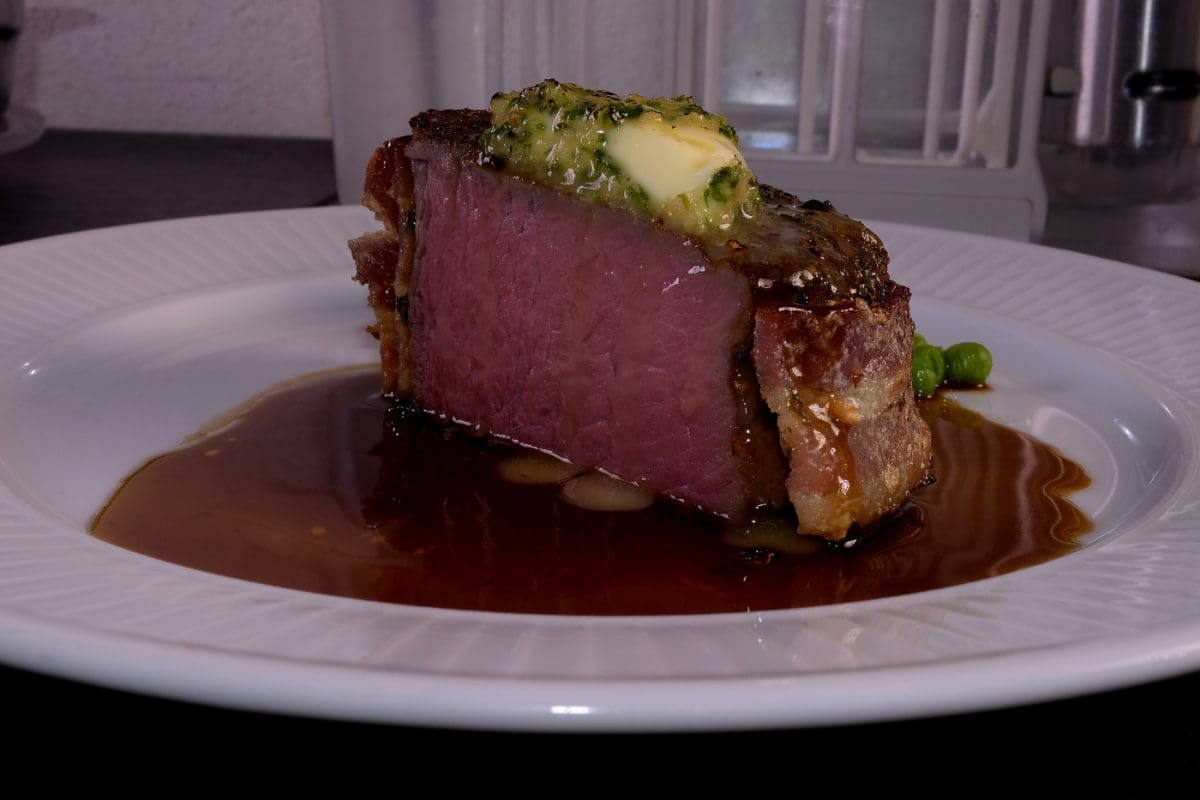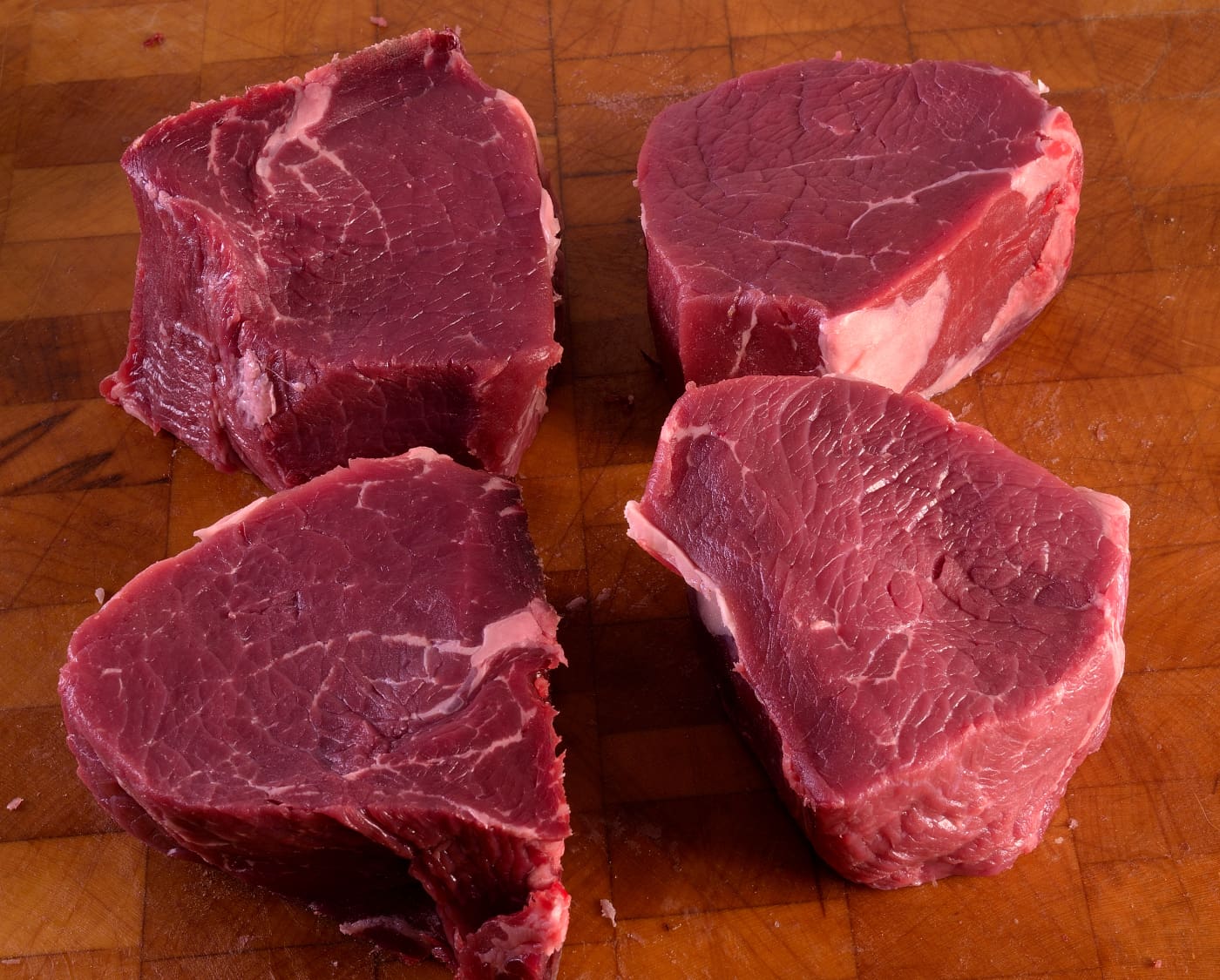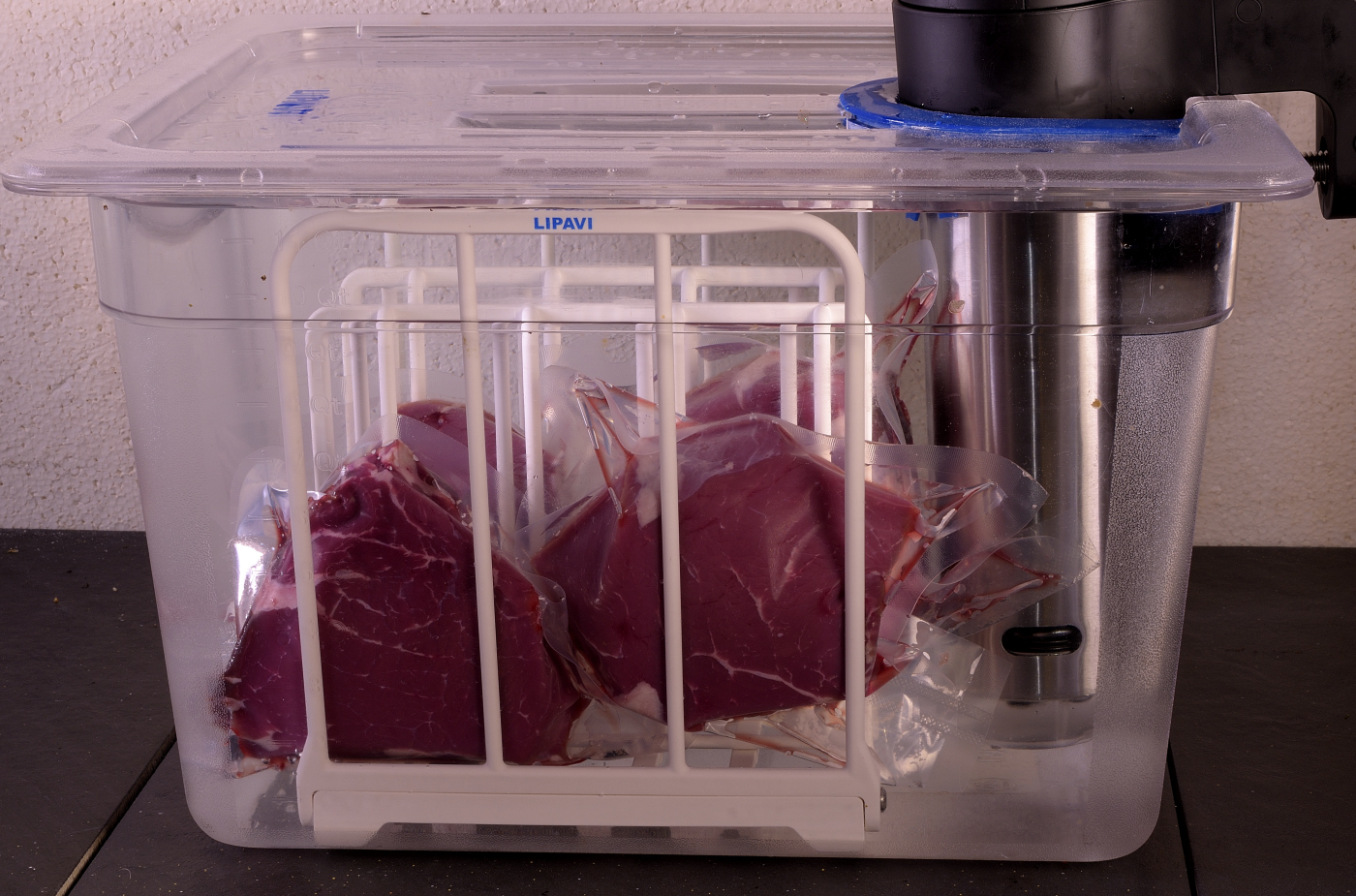
Above: Lipavi C10 container, N10 polycarbonate racks. Lipavi C10L-UNIR lid.
Actual prep time: 1 hour
Level of difficulty: 2.25
Serves 4
Preheat the sous vide bath to 129 F/54 C.
Procedure:
Vacuum seal the individual steak(s) in heat rated plastic bags.
For a rare/medium rare result, sous vide process at 130 F/54 C for a minimum of 6 hours.
To achieve a greater degree of apparent doneness, use our instructional guide that explains doneness preferences.
Time determines the texture/tenderness of sous vide processed proteins, but time cannot be used to accurately MEASURE tenderness. To discover how to determine the actual tenderness of your sous vide project in real time, familiarize yourself with the pinch and poke method.
After the processing interval has elapsed, shock the packages in iced water until they achieve 70 F/21 C. Refrigerated, the steaks can be held at 40 F/4 C for at least two weeks before either proceeding to the next step or utilizing in another application. Never put a hot sous vide package in the fridge–home refrigeration equipment is not designed to chill hot foods in a timely manner. The heat emitted from your package can also compromise the safety of other foods in the vicinity.
Preparations
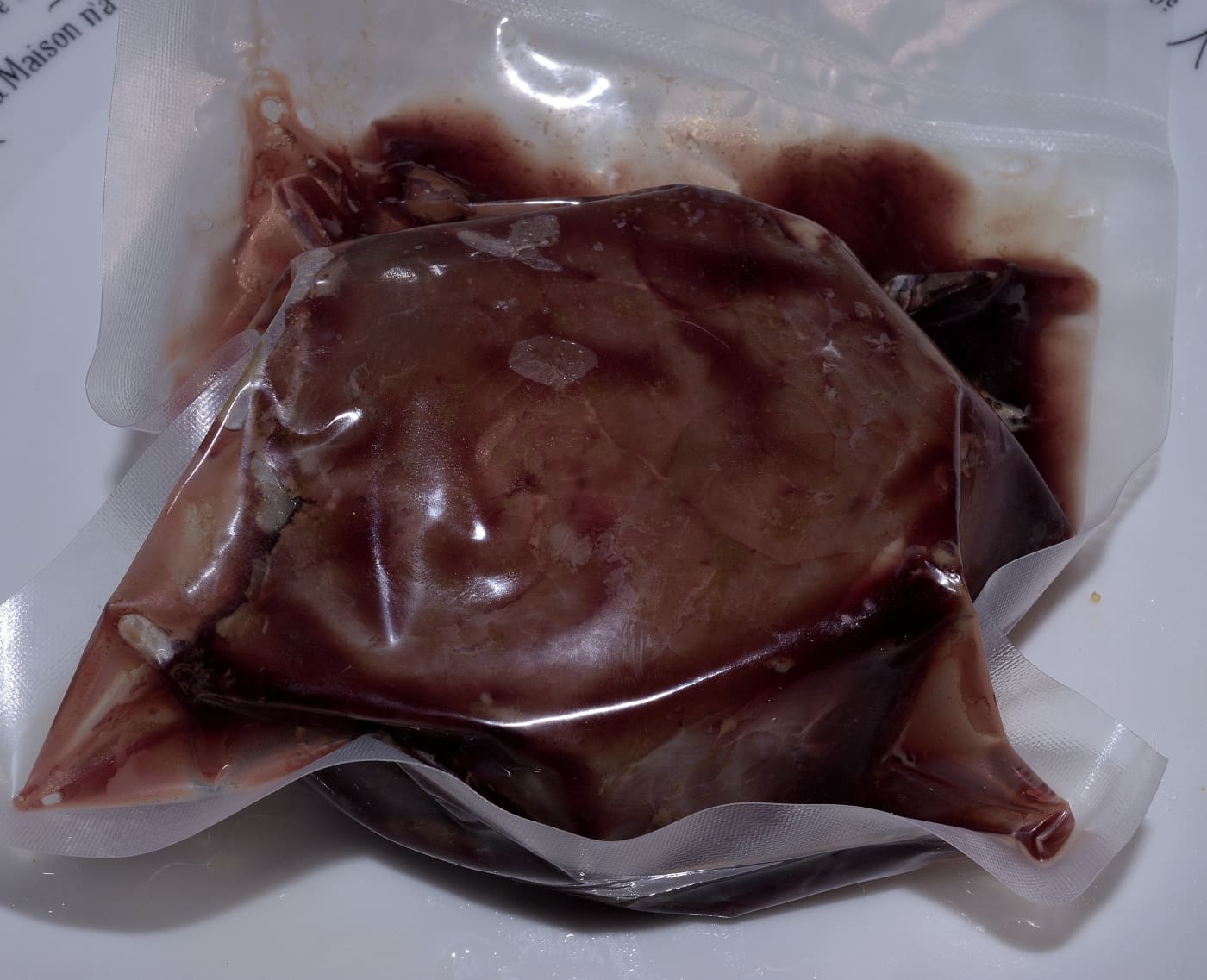
Dip the package in hot water (or a functioning sous vide bath) to dissolve the gel–1-2 minutes.
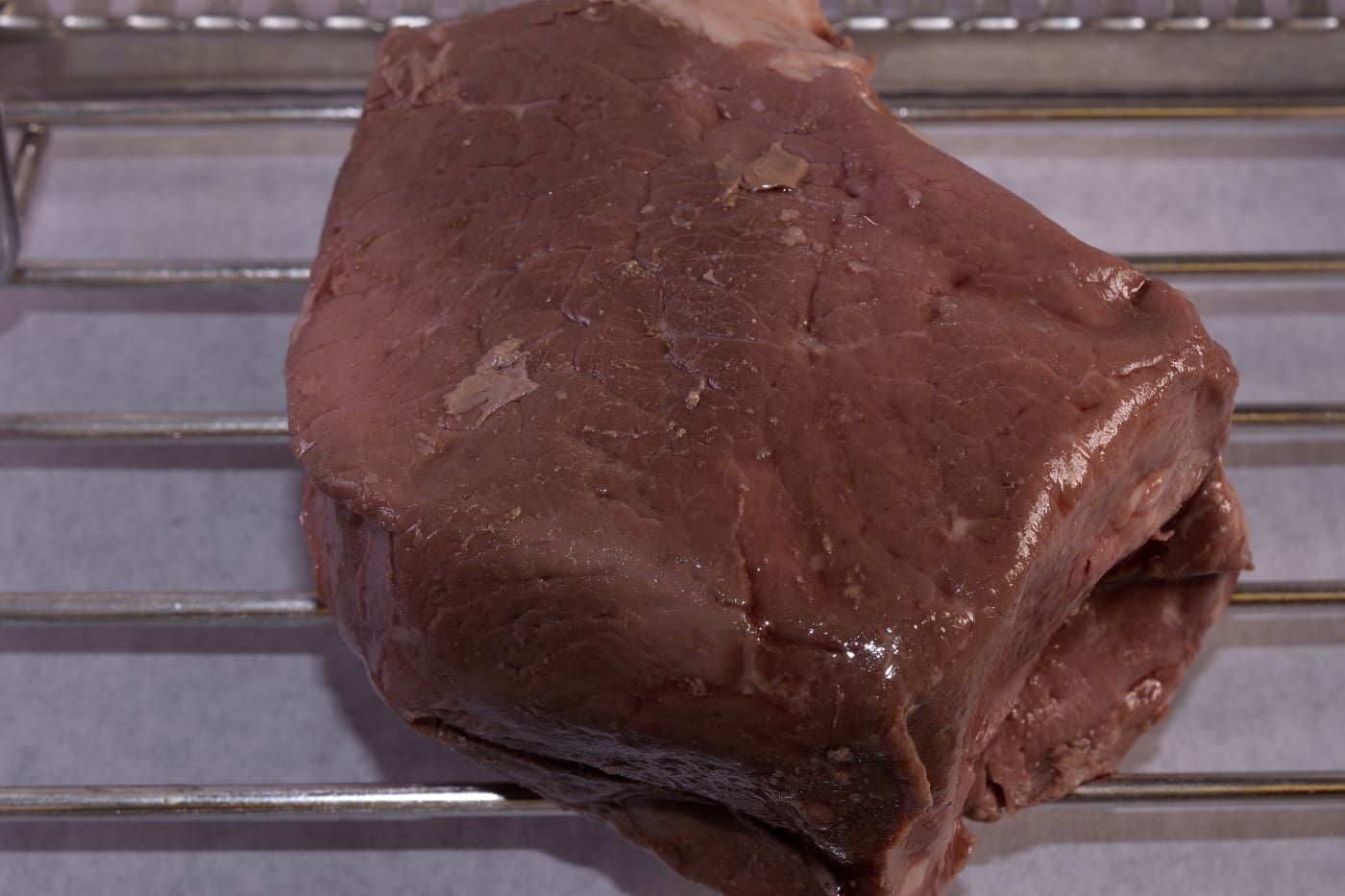
Remove the steak from the package and pat dry with a paper towel. The juices in the bag can be processed as per our method HERE but in the case of individual steaks, the release is usually negligible in volume.
Seasoning
Use the method linked HERE to fully understand how (and why) to apply a durable seasoning crust to sous vide processed proteins.
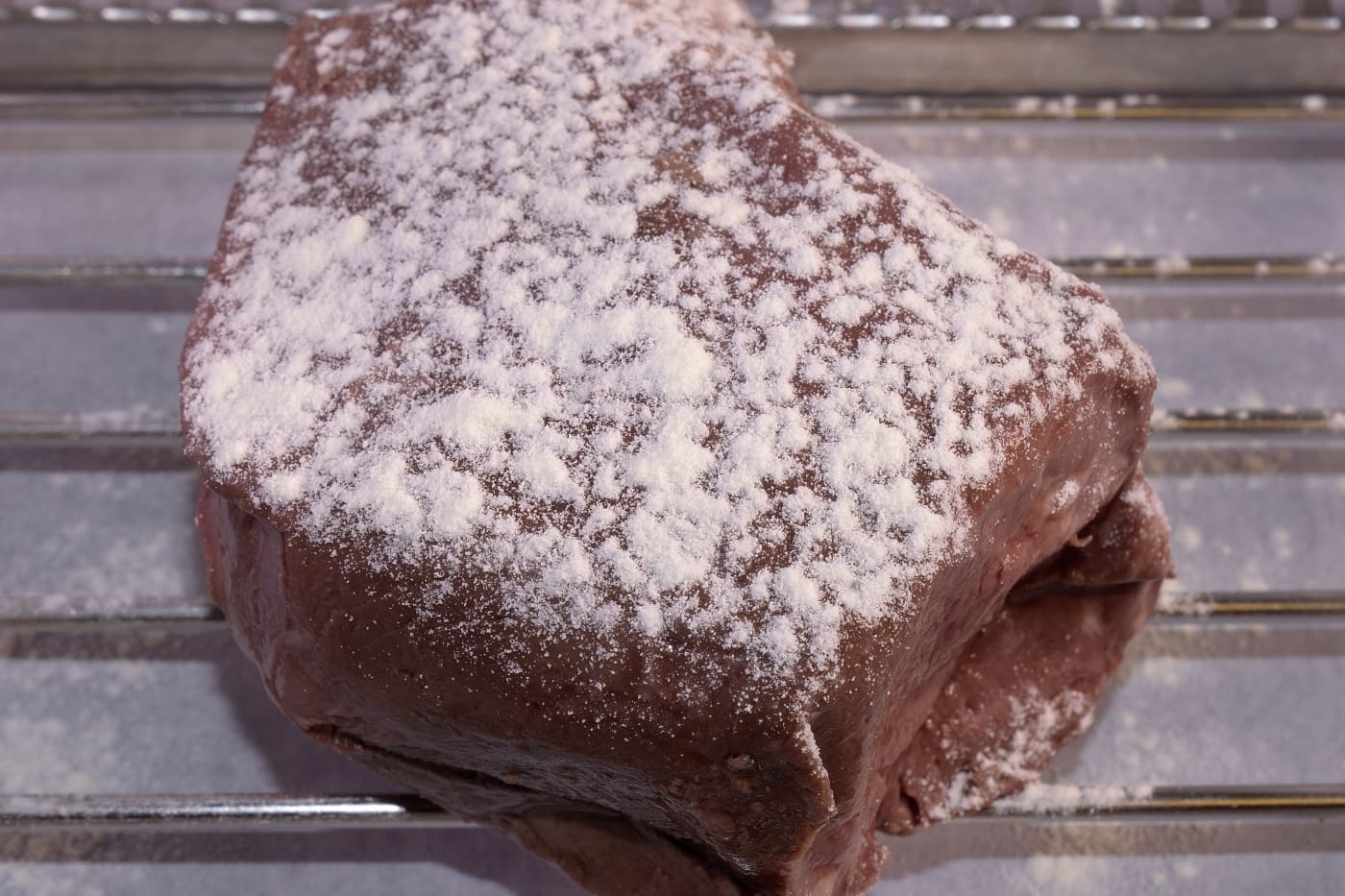
Place the steak on a wire rack and dust with powdered egg whites. Fresh egg whites can also be used, thinned out with an equal amount of water.
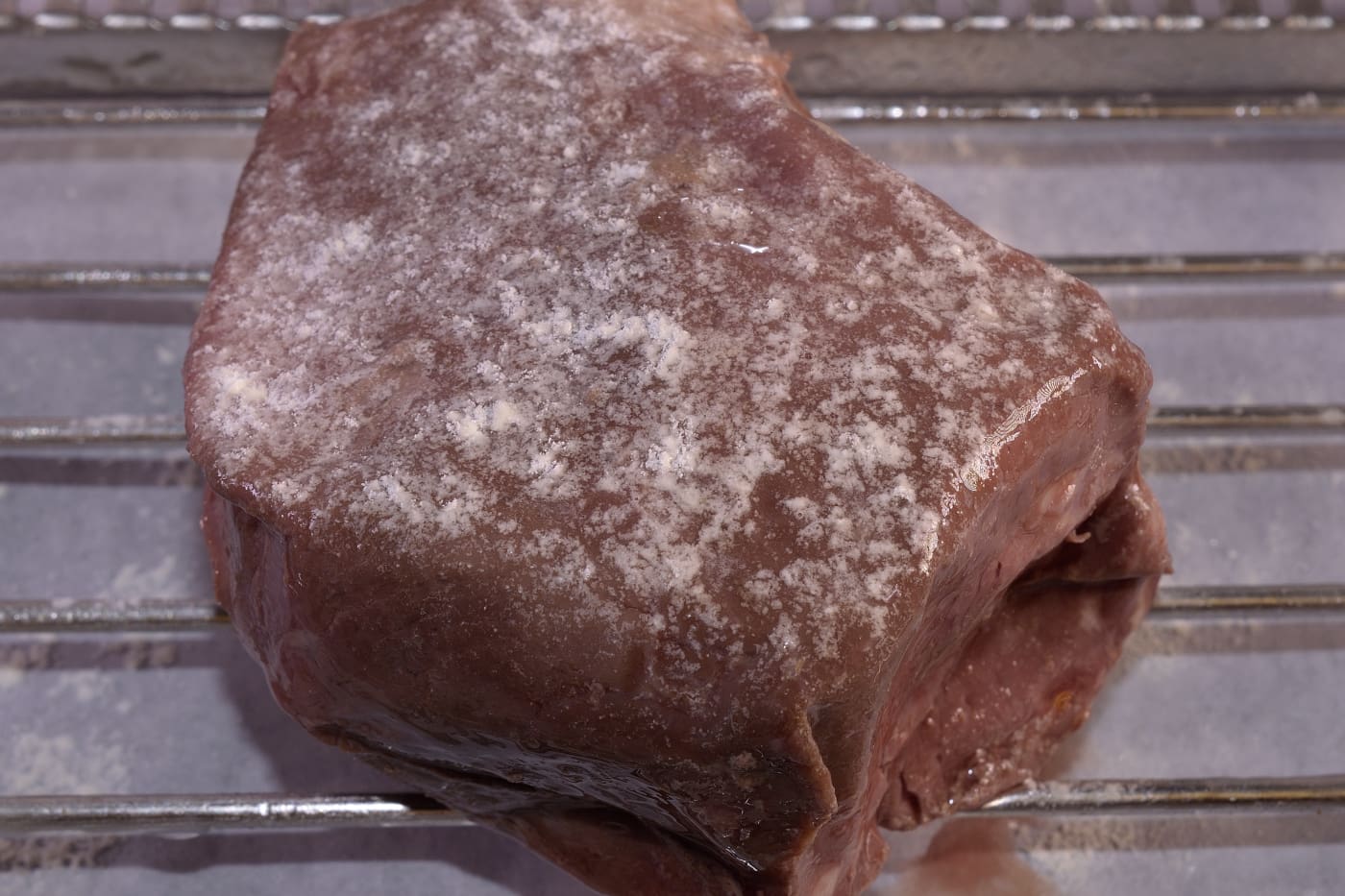
Mist with water to rehydrate the powdered egg whites–not necessary if you use fresh.
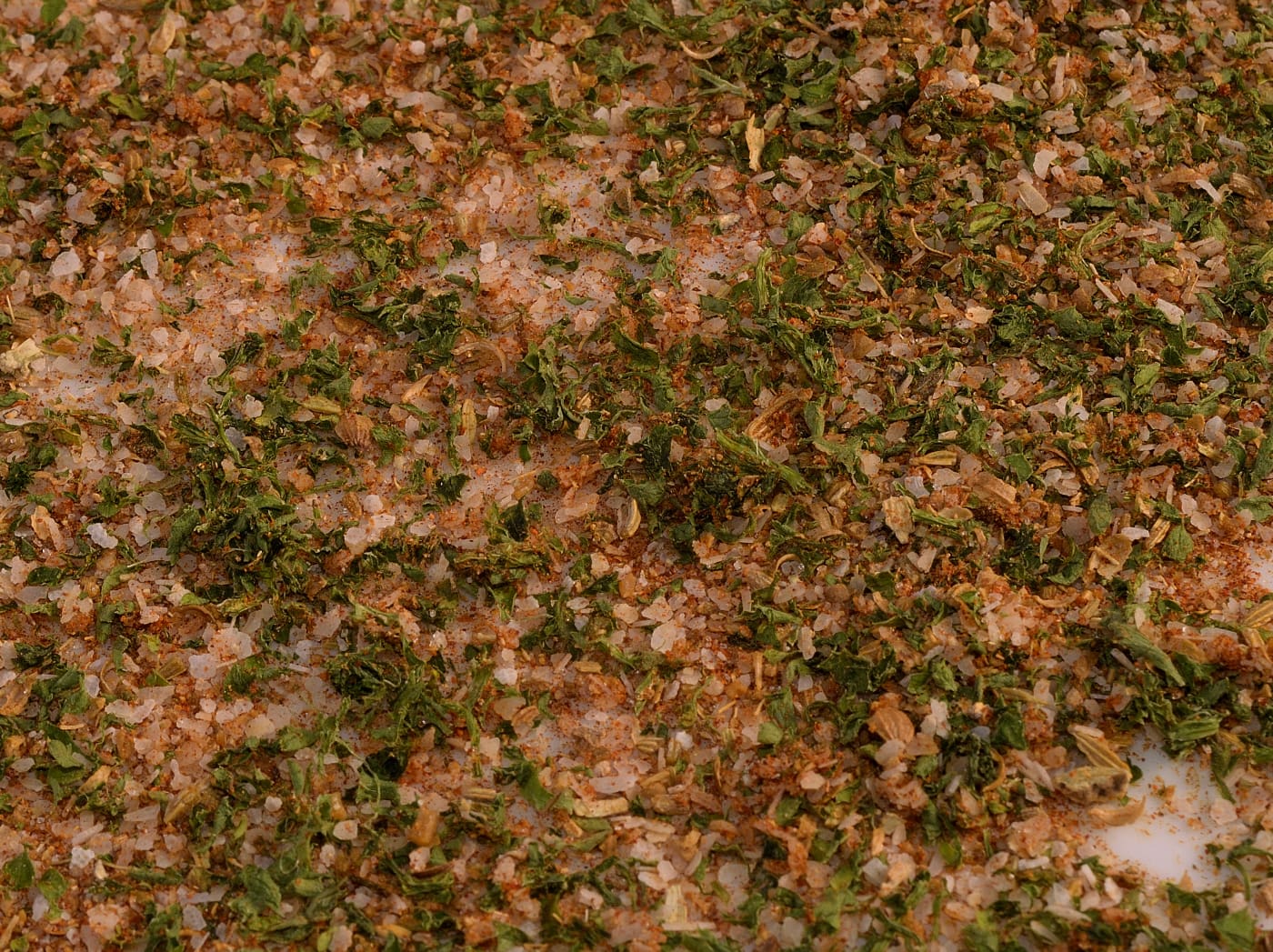
Sprinkle seasonings on a plate.
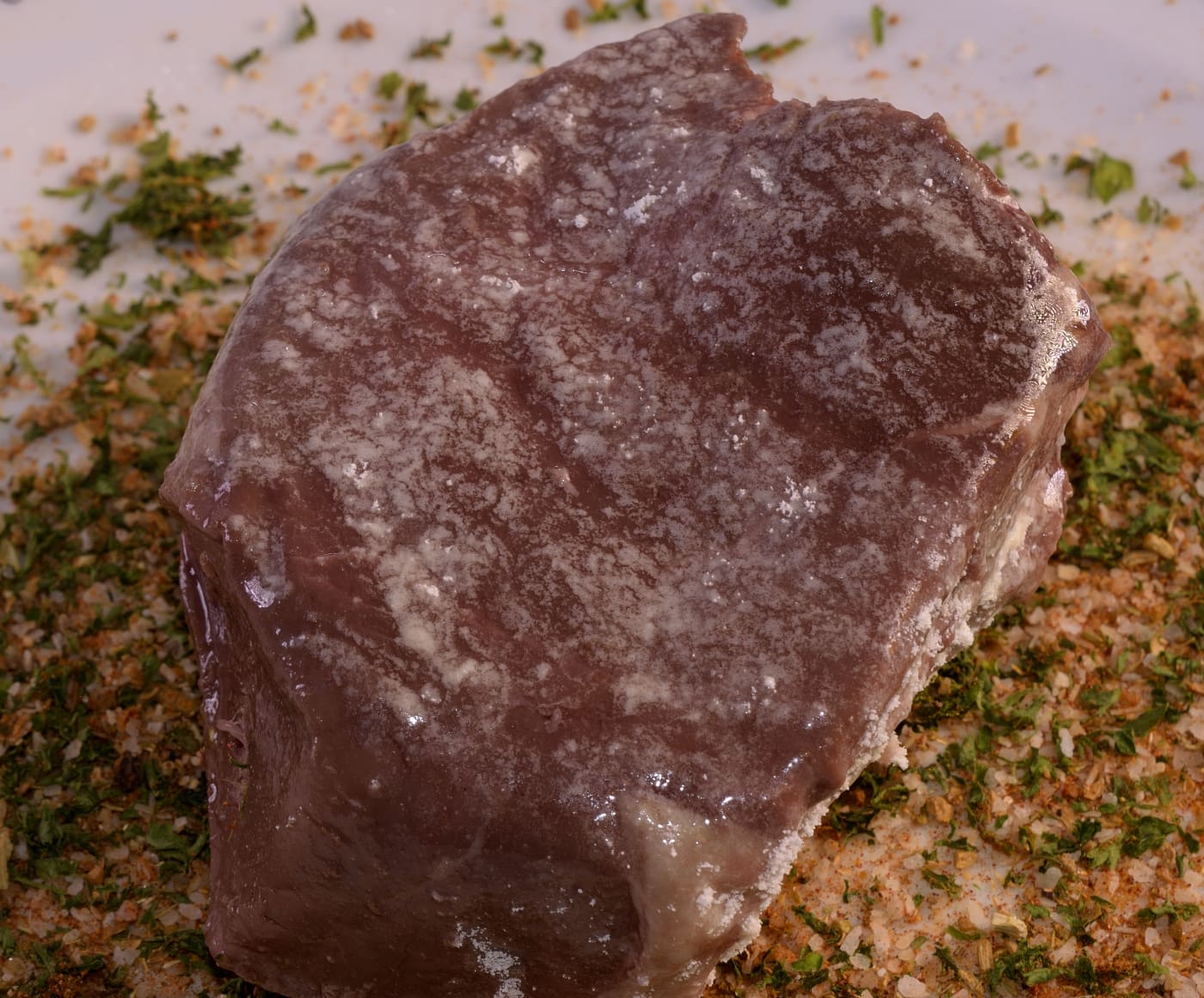
Lay the coated steak on the seasonings.
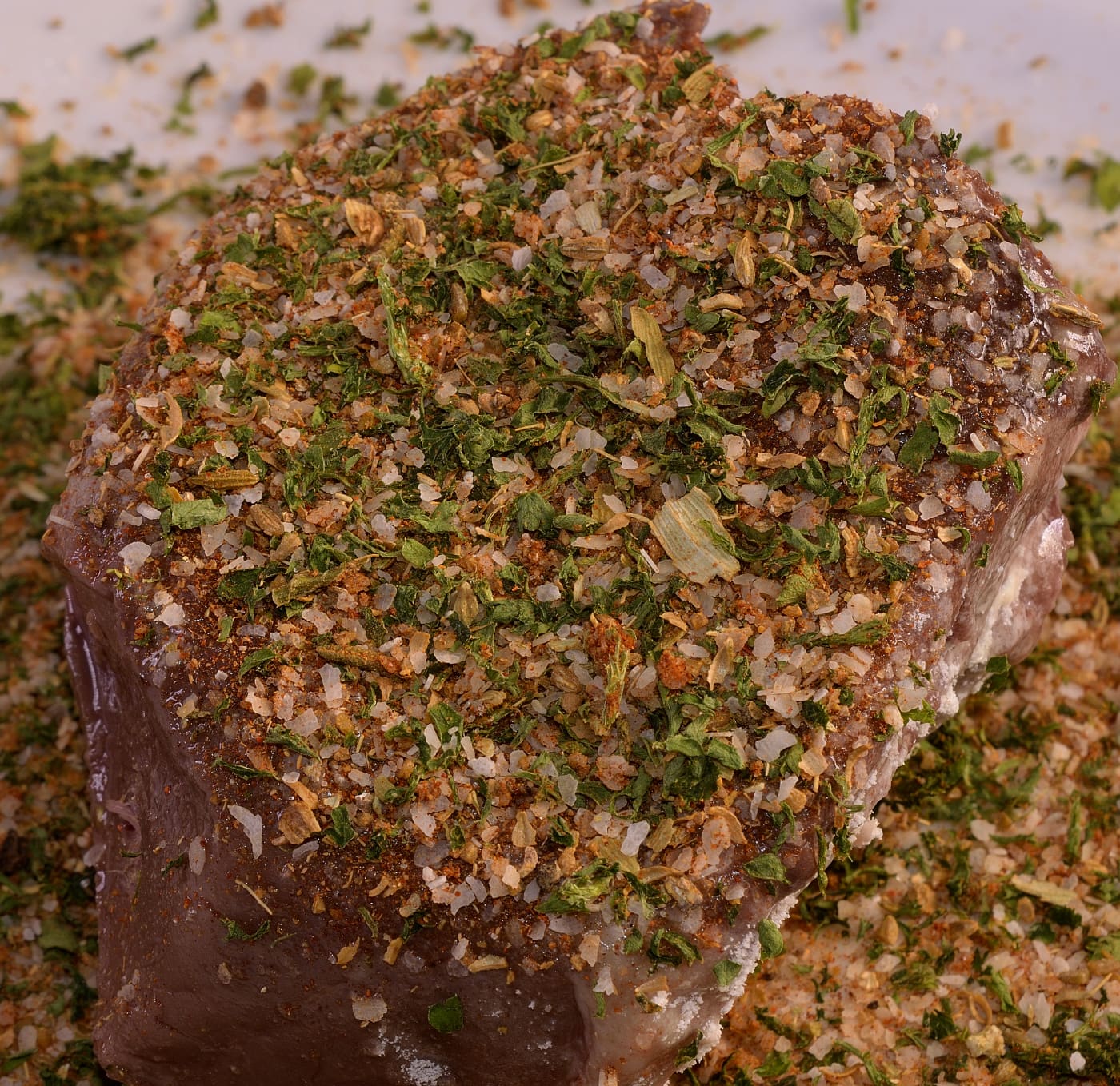
Sprinkle the top generously with the seasonings. Set aside for the moment.
Bacon!
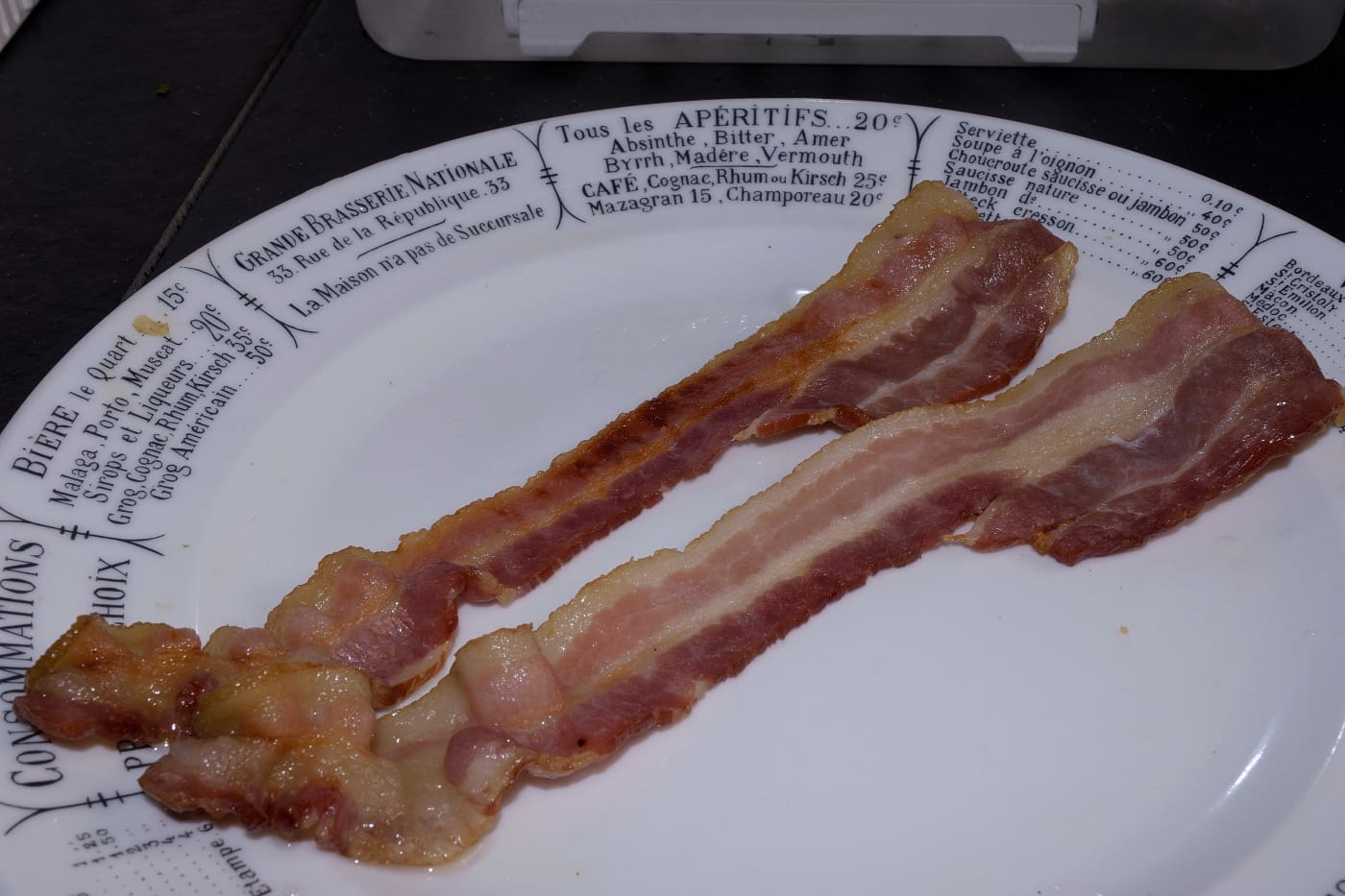
By the time uncooked bacon gets crisp, the steak may be overcooked. To prevent this, blanch the bacon first. Although this can be done in a pan, bacon has a tendency to curl up. The bacon can be partially cooked in the oven, but turning on the oven to soften a few pieces of bacon seems wasteful. One minute on a plate in a microwave oven does an excellent job. Putting a paper towel under the bacon helps to avoid splatter and to absorb the extra fat as it melts.
Repeat the egg white coating process explained above on the bacon–this helps it stick to the steak.
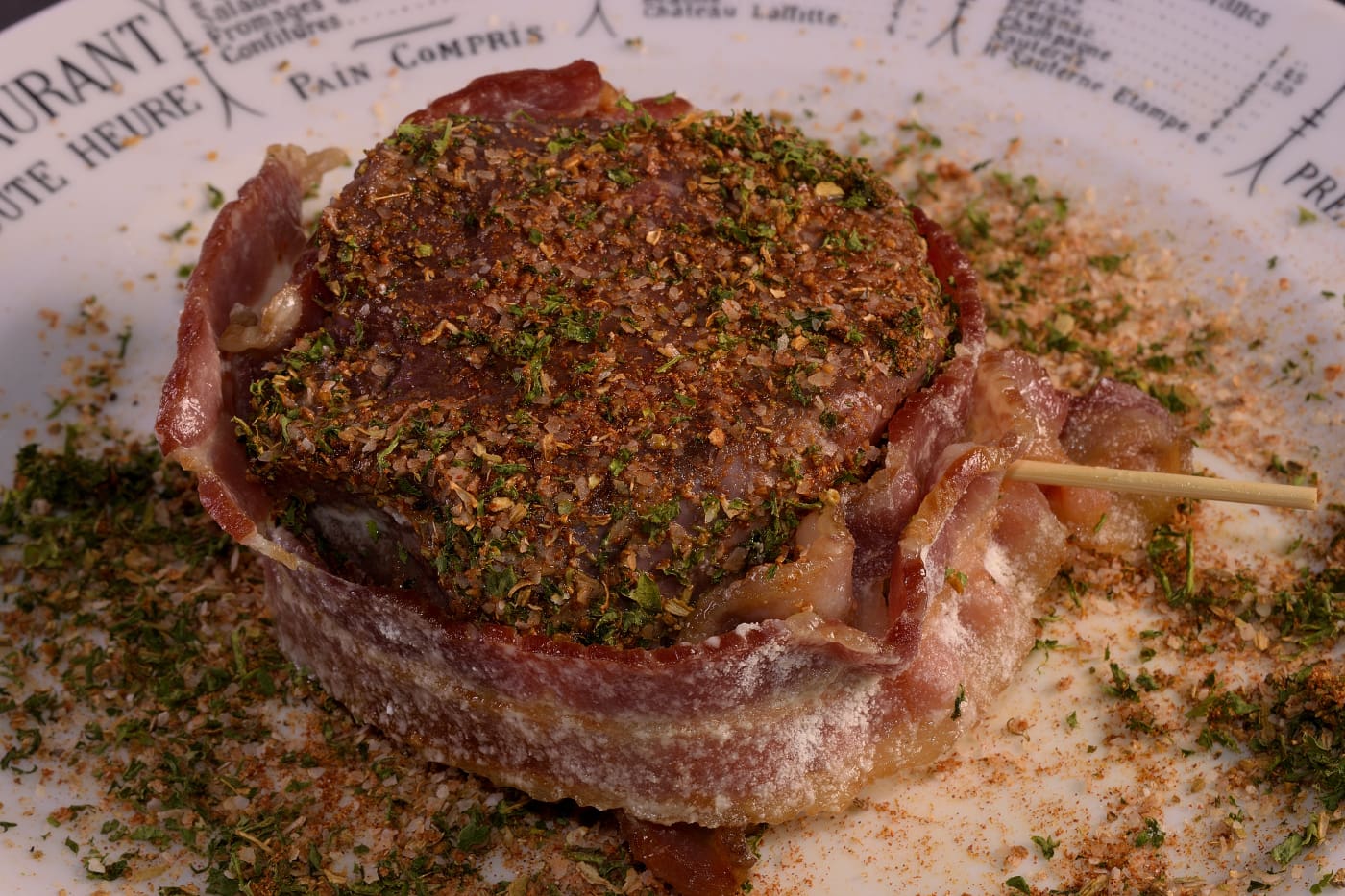
Wrap the steak with the two pieces of bacon as shown, using the skewer to hold it all together.
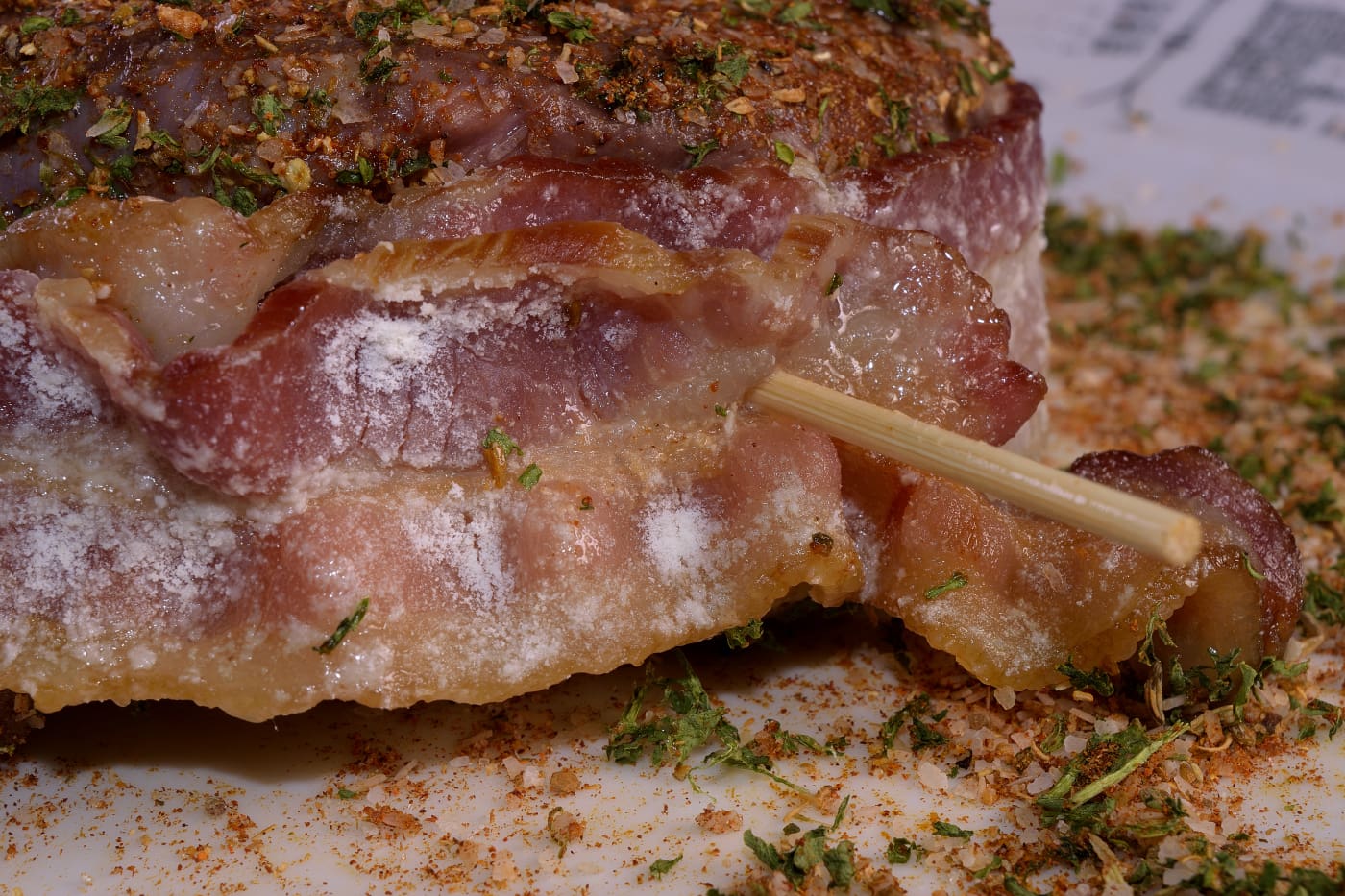
Hold the skewer straight horizontal to make sure it pierces all four exposed surfaces.
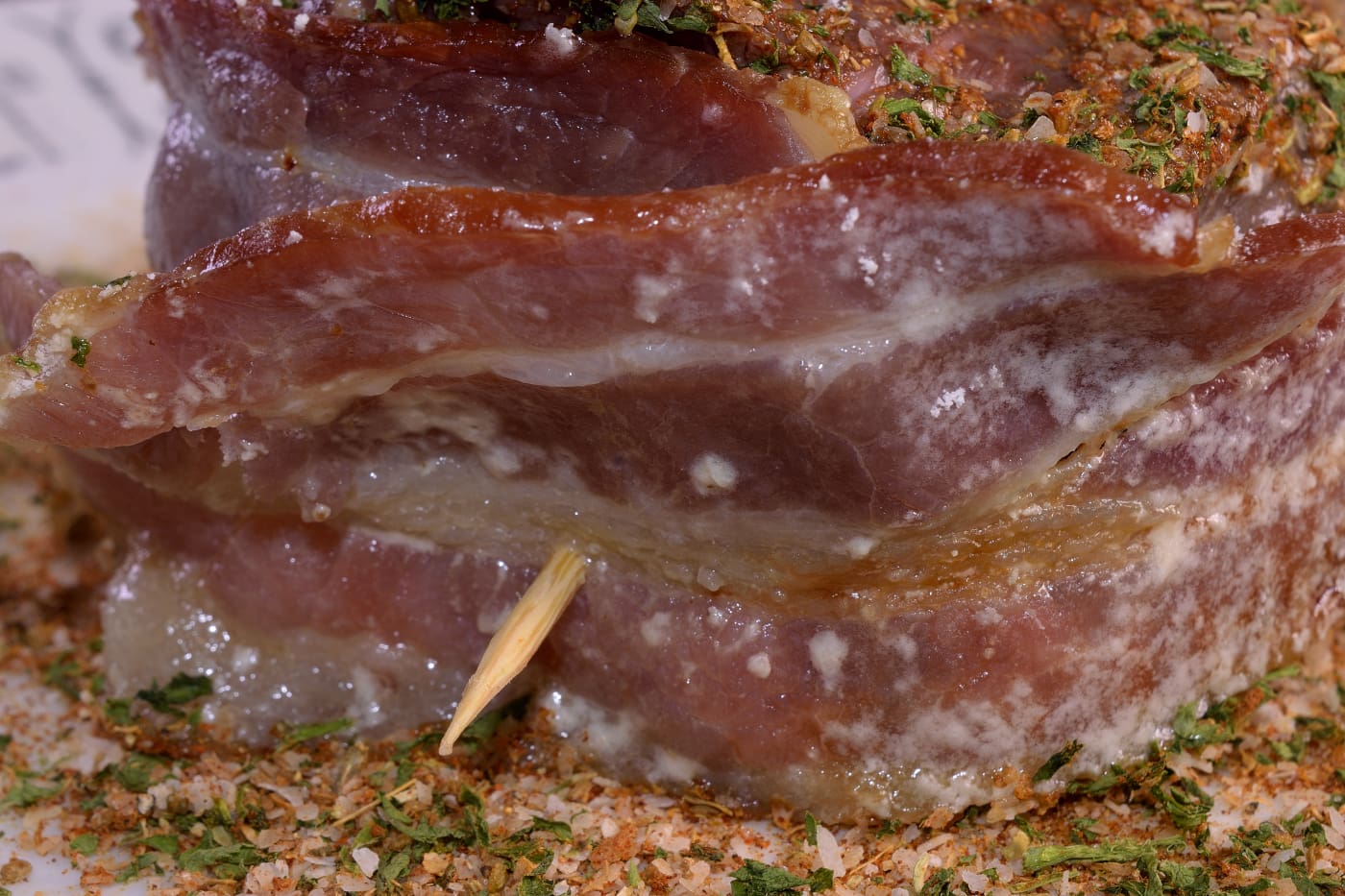
Like a brochette with only one piece of meat.
IMPORTANT: Most modern kitchen ovens have a warming function set to somewhere around 170 F/77 C. Use it to take the chill off of your dinner plates–this is standard practice in most restaurants, especially steak houses. There is another reason too–read on!
Searing
Heat a skillet to approximately 250 F/121 C. Add enough oil to liberally coat the bottom of the pan–this will help the bacon to render. Use tongs to carefully add the steak to the pan. Listen for sizzling–hissing is too cold, popping is too hot. This crust is durable but anxious over-handling of the steak can dislodge it. Brown the steak on both sides. It can be stood on its side to help crisp the bacon if necessary.
IMPORTANT: Stage steak into the warming oven for 15-20 minutes–this will help complete the retherming process (if necessary) but will not overcook the steak. Take that time to assemble the rest of the components of your presentation.
The internal temperature should achieve at least 125 F/52 C. A probe thermometer inserted into the center can be used to verify this until you develop a “feel” for it.
Presentation
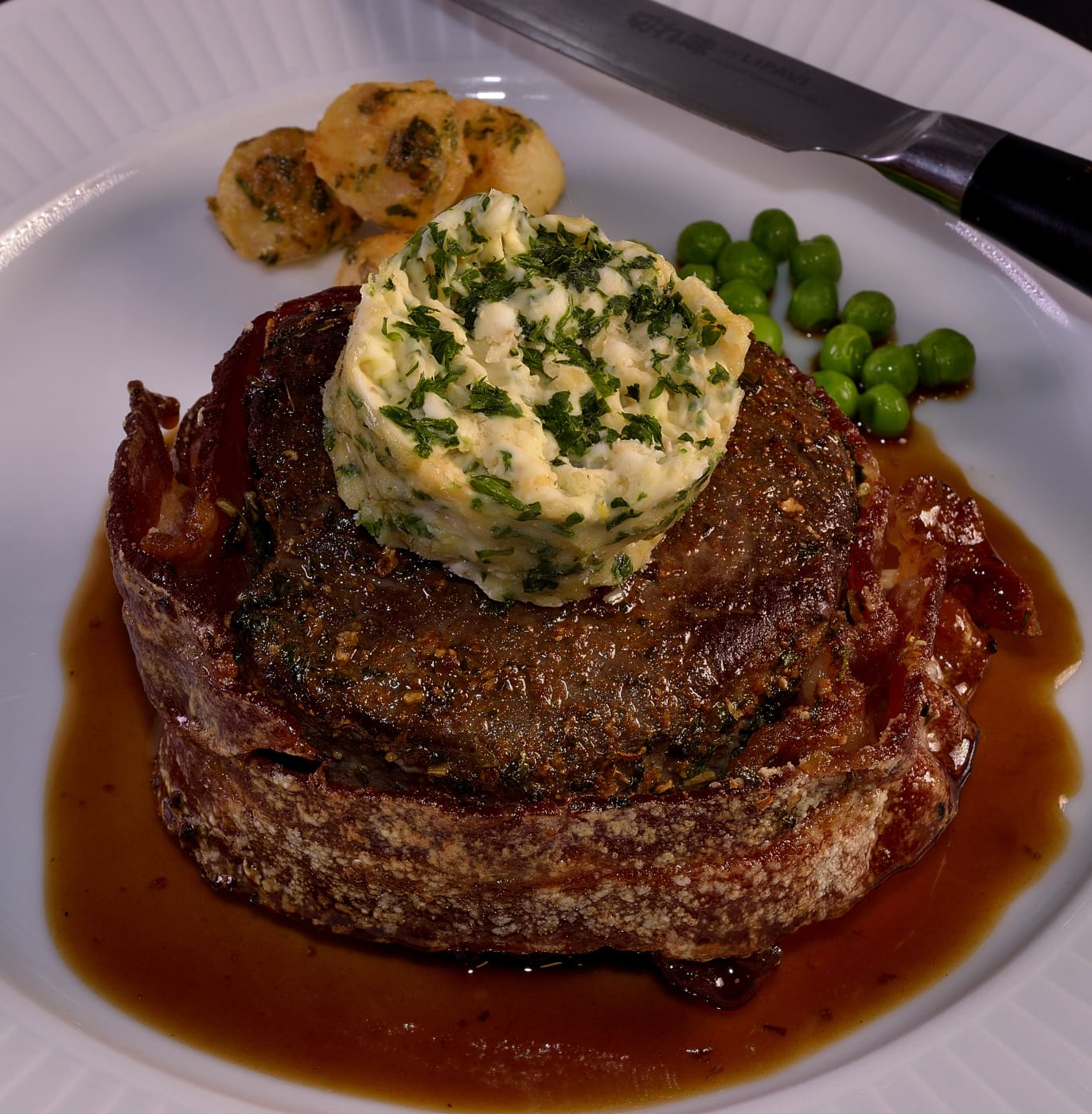
In the picture: garlic butter crown, celeriac sautéed in butter and tossed with a little parsley, peas, glace de viande.
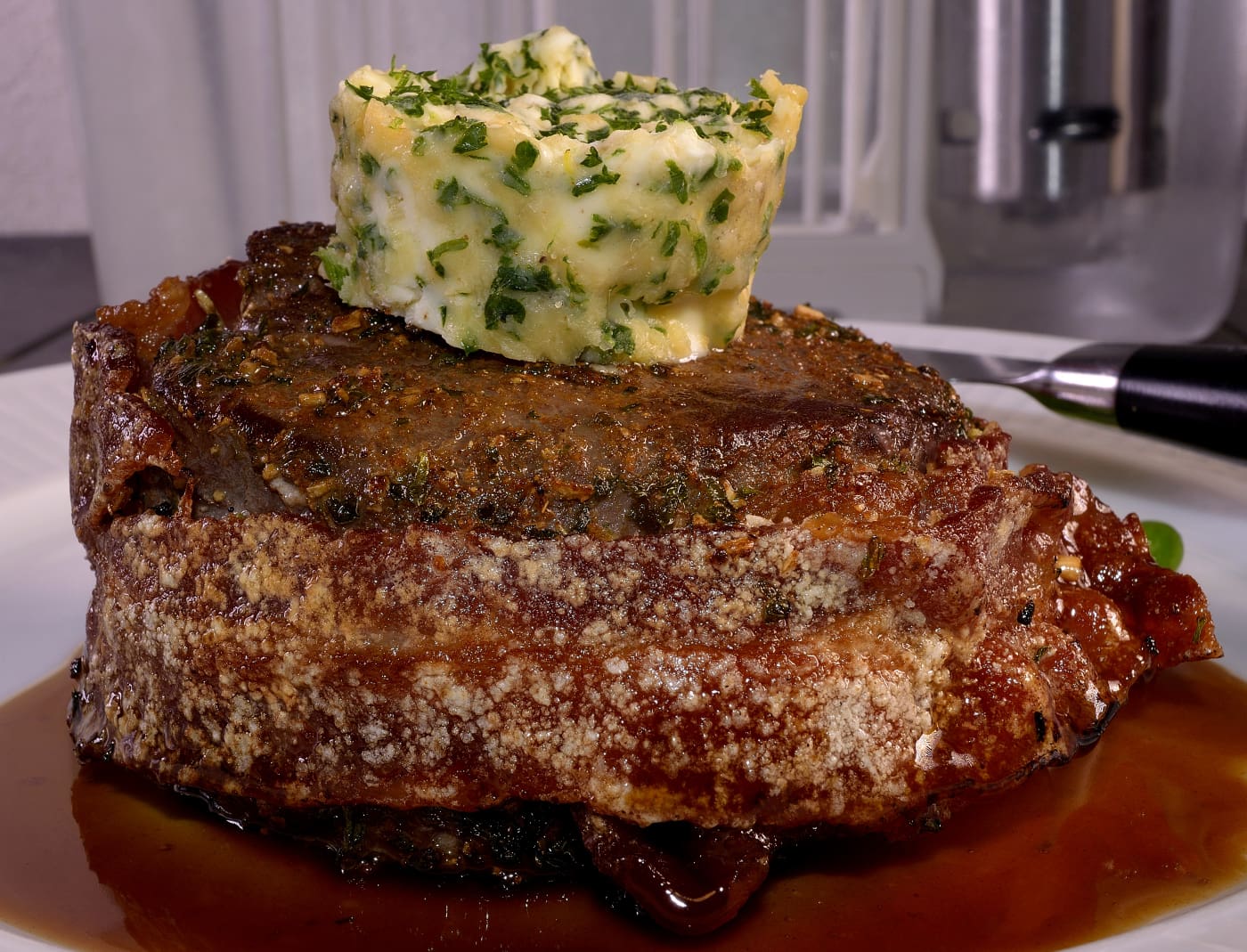
The method we outlined creates the effect of well crisped bacon. The devil is in the details. If the skewer is removed carefully, the whole thing will stick together.
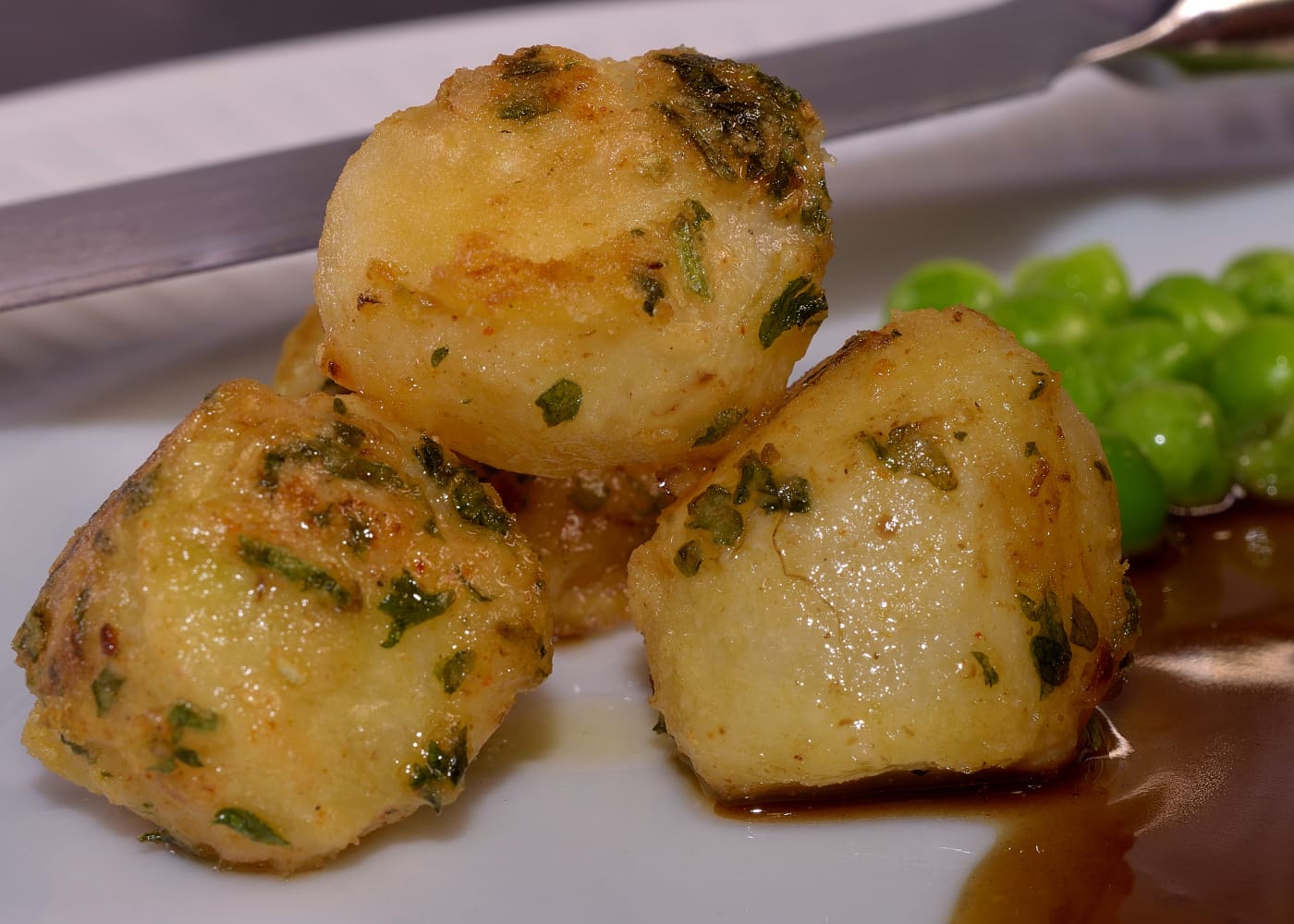
Celeriac is a vibrant alternative to potatoes.
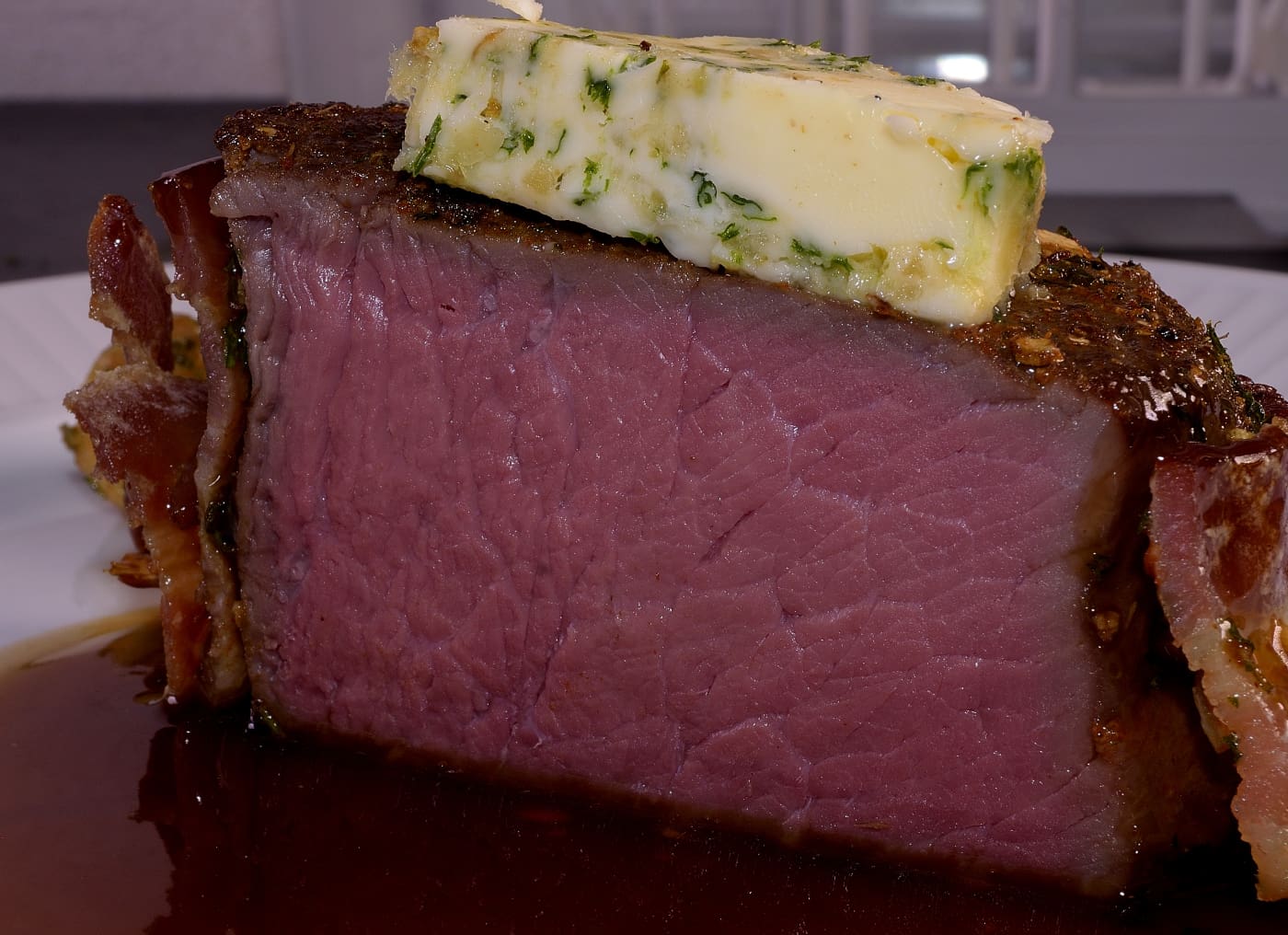
The uniform appearance of doneness is a feature of sous vide processing–very difficult to achieve by traditional means.
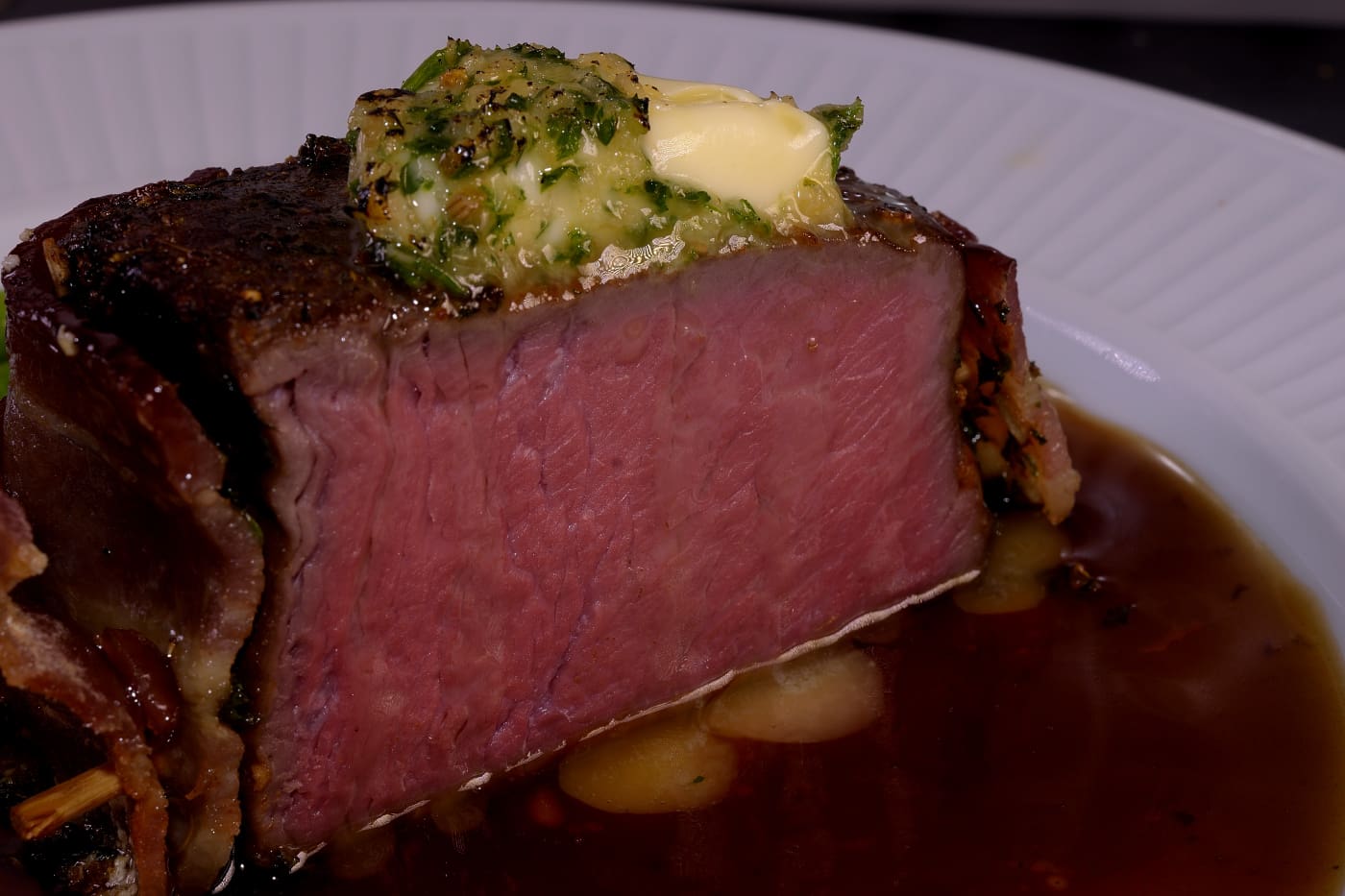
The slowly melting Beurre Maître d’Hôtel adds a bit of sinfulness.
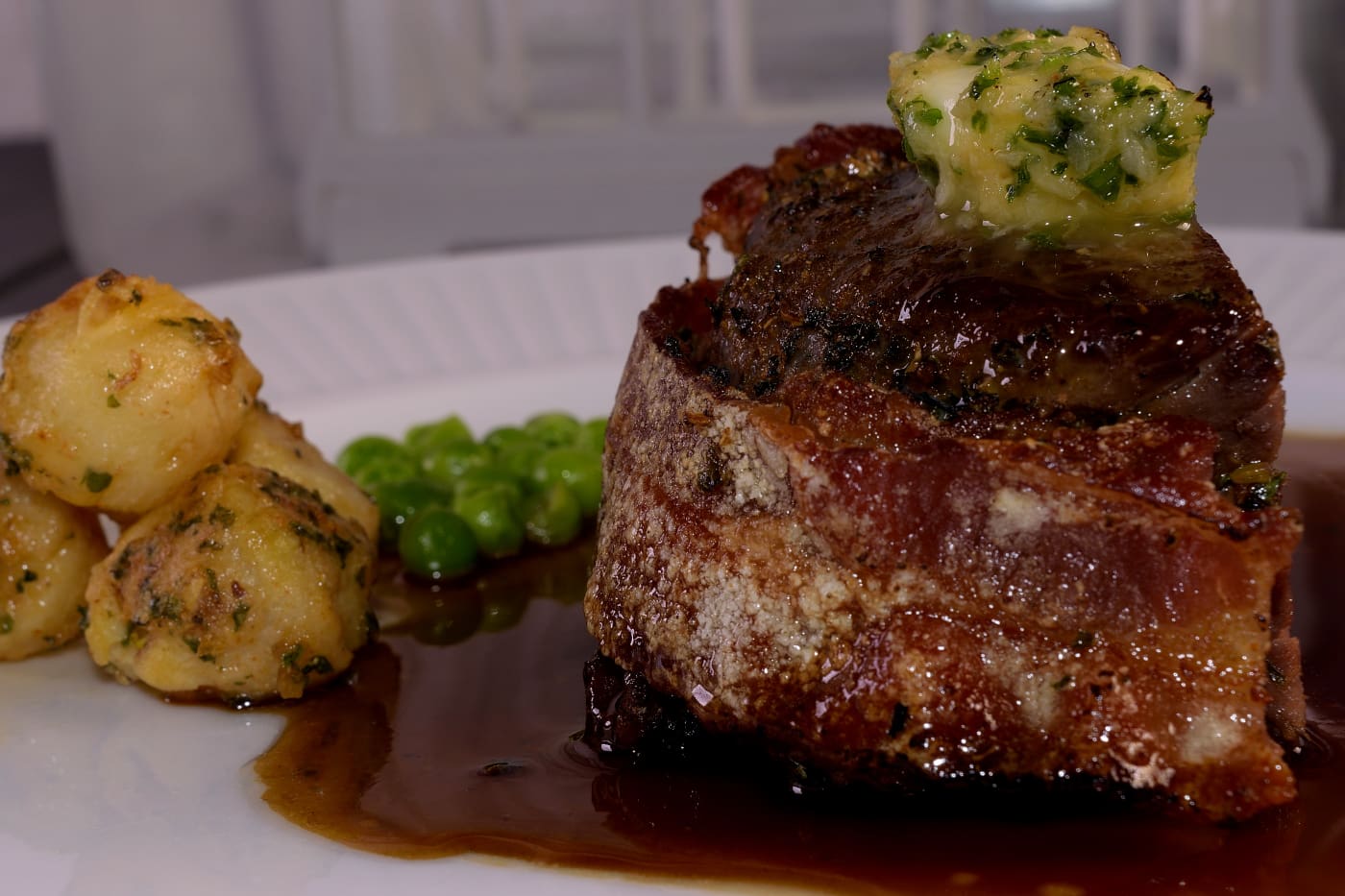
Notes:
Purchasing a whole beef top sirloin primal cut offers the benefit of considerable savings in cost. To learn how to easily disassemble a whole top sirloin, please read: Top Sirloin: you don’t have to be a butcher.
For other applications utilizing beef top sirloin, visit HERE.
Norm King
Don’t forget to visit us on Facebook at SVR–Sous Vide Resources; Low Temperature Pasteurization, Sous-B-Q™,
